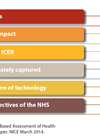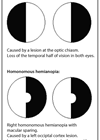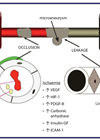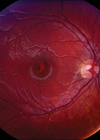Ophthalmology archive for 2014
NICE drugs: an update on what’s good to go
Treatment options recommended by the National Institute for Health and Care Excellence (NICE) must be readily available for use in the NHS of England and Wales. This article provides an overview of recent guidance from NICE and summary advice issued...
How to examine the visual system Part 1: visual acuity, visual fields and eye movements
Asking candidates to perform an examination of the visual system, either as part of a full cranial nerve exam or as an individual entity, is a common station in practical examinations during medical school. It is important to practise for...
Adaptive optics imaging: resolving single cells in the living eye
The human retina is unique in the central nervous system (CNS) in that it can be directly visualised non-invasively. Technological advances of several imaging modalities, including optical coherence tomography (OCT), multichannel scanning laser ophthalmoscopy (SLO) and fundus photography, have afforded...
Letter from America: Orbit and oculoplastic fellowship, University of California, San Diego
I was the fortunate recipient of the 2012 Keeler Scholarship, granting me the incredible opportunity to undertake a fellowship at the University of California, San Diego (UCSD) in orbital, oculoplastic and reconstructive surgery. My fellowship mentors were the renowned Professor...
Innovations in ophthalmology: what can the innovations of the past teach us about tomorrow?
BUOS Prize Essay – 2nd prize winner for 2013 submissions Introduction An essay titled Innovations in Ophthalmology might choose to focus on the history; from cataract couching to femtosecond lasers, ophthalmology has had no shortage of topics worthy of discussion....
Treatment of diabetic macular oedema
Diabetic macular oedema (DMO) is a common complication associated with diabetic retinopathy, and the most common cause of visual impairment in diabetes [1]. With predicted rising levels of diabetes (in England by 2025 the estimated population with diabetes will be...
Contemporary glaucoma therapy: spoilt for choice
The goal of glaucoma management is to prevent visual loss and disease progression in the patient’s lifetime through effective lowering of intraocular pressure (IOP), the primary modifiable risk factor in glaucoma. Sustained and consistent IOP reduction is key to halting...
The Eye Health Network – an ‘optometry-first’ approach to eye care
Historically, in NHS Grampian, ophthalmology and optometry worked separately, with even the process of optometry referral to hospital occurring only at the behest of the patient’s general practitioner (GP). Criteria for referral were not discussed and feedback after referral was...
Burning vision: vision loss from misuse of ‘toy’ laser pens in children
A case series of five children with macular burns due to the misuse of novelty laser products, purchased online or abroad, was undertaken at the Royal Hallamshire Hospital and The Children’s Hospital, Sheffield [1]. All patients were from the Sheffield...
Guide to Gaining Approval for a Clinical Study
This article focuses on gaining approval for clinical research involving NHS patients, although the principles can be applied to other types of research. The intention is to give an overview of the requirements for setting up a research study, but...
Ophthalmology in the developing world
After the second year of medical school, I spent my summer vacation working as a volunteer for a small Italian non-government organisation (NGO), named HEALTH-AID. As part of my volunteering experience, I joined a team of European doctors, medical students...
Inherited retinal disorders now the leading cause of blindness
The recent paper in BMJ Open, from the UCL Institute of Ophthalmology, ‘A comparison of the causes of blindness certifications in England and Wales in working age adults (16-64 years), 1999-2000 with 2009-2010’ concludes that inherited retinal disorders (IRD) such...














